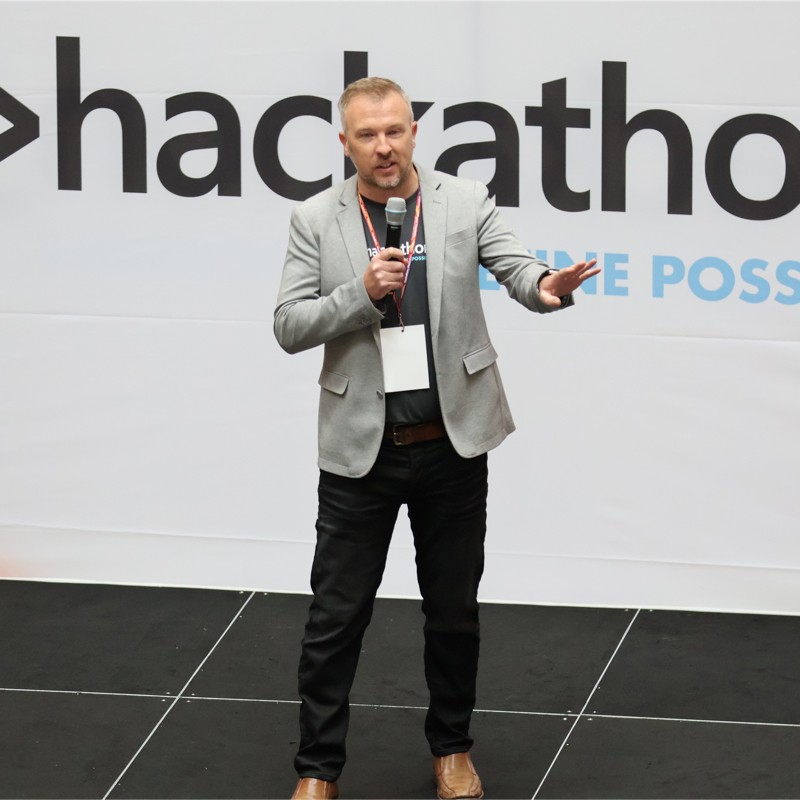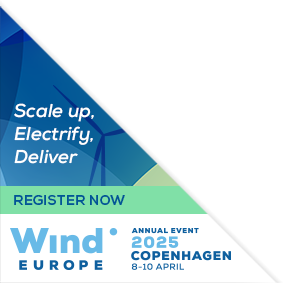“Hack the Climate” Hackathon

Concept
From 18-20 March, alongside the WindEurope Annual Event 2024 in Bilbao, Vestas, HUB Ocean, and Microsoft will host ‘Hack the Climate 2024’ – an exciting wind energy and climate hackathon.
Taking place at the Bilbao Exhibition Centre, just ahead of the WindEurope Annual Event, Hack the Climate is dedicated to moving the wind energy industry forward and as such is inviting designers, developers, data scientists, analysts, and wind energy experts to work with some of the biggest names in the industry to create use cases from 3 huge data sets: Vestas’ Climate Library, HUB Ocean’s Data Platform, and Microsoft’s Planetary Computer. Don’t miss this unique opportunity to tap in to a treasure trove of data to create innovative game-changing solutions.
Challenge
The hackathon challenge is to build a model that exploits these huge data sets to help accelerate the green transition. This could be in a wide field of relevant areas such as development, operations & maintenance, wind farm shipping operations, etc. The winning solution should have a clear value proposition and be aiming at solving a clear business problem.
Important notes
- Weather forecasting is out of scope of this hackathon.
- Climate change can only be addressed through observed trends potentially detectable in the VCL data.
WindEurope hackathon prizes
1st prize
€15,000
2nd prize
€5,000
Who is this hackathon for?
Professionals from the following disciplines should find the scope of this hackathon interesting:
Data science
Programmers, data engineers, and scientists.
Ocean conservation
Marine scientists, biologists, and specialists.
Climate risk analysis
Transport, agriculture, and pollution analysts and specialists.
Finance / Insurance
Professionals working in the field of insurance against the risks of climate change.
Renewable energy
Professionals working in the field of renewable energy, including wind, solar and ocean energy sources.
Environmental research
Specialists in environmental science and climate change who can contribute knowledge on the impact of renewable energy on ecosystems.
How to participate
1
Review the challenge and data sets.
2
Formulate an intention.
3
Form a team of 3 to 6 people.
4
Register by 31 January. Deadline extended to 7 February. First come first served.
5
Participating teams will be confirmed on a rolling basis until full capacity is reached.
(100 participants)
The data sets and samples
Vestas Climate Library
The weather variables like wind speed, wind direction, temperature, humidity, cloud density (water and ice), precipitation, turbulent kinetic energy, pressure, air density, sensible and latent heat flux, solar radiation, etc., are available hourly since the year 2010 until one month before the present, at a horizontal resolution of 3 kilometers, at any height above the surface. Certain offshore regions may not be covered with the high resolution data and a 15 km resolution will be available.
Data samples
HUB Ocean Data Platform
HUB Ocean will contribute with:
- The Ocean Data Platform, complete with a comprehensive data catalog and relevant open datasets, which participants can access via user-friendly interfaces or APIs.
- Knowledge and advice regarding open ocean data covering most categories of oceanographic data and human activities.
Data samples
EMODNet Human Activities
https://emodnet.ec.europa.eu/en/human-activities
The EMODnet Human Activities dataset serves as a comprehensive guide to human activities in European seas and oceans. It covers a range of activities, from traditional ones like fishing and shipping to newer ones like offshore energy facility construction. This dataset offers a centralised source for data on 20 different themes, detailing the location, extent, and characteristics of these activities, along with historical trends.
This dataset is particularly crucial for planning new offshore wind farms and understanding potential sector conflicts. It helps identify existing activities in a proposed wind farm area, such as busy shipping routes or fishing zones, and provides information on existing offshore energy facilities. This comprehensive overview aids in spotting potential conflicts, like areas popular for both fishing and proposed wind farms, facilitating informed decision-making for sustainable marine and maritime management.
Ocean Biodiversity Information System (OBIS)
The Ocean Biodiversity Information System (OBIS) functions as a comprehensive digital repository for ocean life data. It aggregates global information on marine species occurrences and environmental data from various sources, including museums, research institutes, and monitoring programs. This makes OBIS an essential tool for scientists and decision-makers in marine resource management.
OBIS’s significance extends to planning offshore wind farms, resolving sector conflicts, and assessing environmental pressures. For wind farm planning, OBIS offers crucial data on local marine species and habitats, helping to identify sensitive areas for marine mammals or birds. In addressing sector conflicts, OBIS highlights regions of high biodiversity that might interest multiple sectors like fishing, shipping, and renewable energy, aiding in conflict-minimising planning.
Furthermore, OBIS helps pinpoint areas where species face stress from pollution, climate change, or overfishing, guiding efforts to mitigate additional impacts from new activities like offshore wind farms. Overall, OBIS is a key resource for informed, sustainable ocean management decisions.
Note: HUB Ocean is not the provider of these (publicly funded) datasets, but will list them in the data catalog and make the data accessible through the Ocean Data Platform APIs prior / during the Hackathon.
Microsoft Planetary Computer
The Microsoft Planetary Computer is an initiative by Microsoft, aimed at providing environmental researchers and conservationists with vast amounts of planetary-scale environmental data and the computational resources needed to analyse this data. This platform integrates globally sourced datasets, including satellite imagery and environmental data, with cloud computing and AI tools to enable more efficient and effective monitoring, modelling, and management of Earth’s natural systems.
Terms & Conditions
Judges

Michael Wilkinson
Vestas

Owen Dignam
Microsoft

Mark Zagar
Vestas

Johannes Berrum
HUB Ocean
Judging Criteria
Innovation
How well is Vestas Climate Library being utilised?
Scalability
Can this PoC be scaled up and implemented?
Technical difficulty
Is the project technically impressive?
Presentation
How well has the team presented their idea? Including the demonstration and presentation of the idea
Deemed success
How well the PoC achieves the intended outcomes?
Business Impact / Environmental impact
What is the ability to improve efficiency / impact?
Agenda
Day 1
Day 2
Day 3 (day 1 of event)
Practical information
Contact

Mafalda Martins
Venue
The hackathon takes place at BEC – Bilbao Exhibition Centre.
Find out more about the venue.
Use-case examples
Note: This is a non-exhaustive list.
Climate patterns and conditions
Can a change in rainfall patterns, wind regimes, temperature variations, etc. and/or combinations/correlations of these and other parameters impacting human activities be detected in the available data?
Impact of the turbine hub height
Calculate the energy production impact if all wind turbines currently installed in the EU (including offshore) would have their hub height raised to a staggering 190m (or another height, keeping their current rotor diameter as-is).
Offshore wind power
Design a model that can estimate the energy savings and carbon emissions reduction from switching to offshore wind power in different regions of the world.
Fuel efficient routing
Determine the most fuel efficient routes for the shipping industry, with different scenarios (for example, assuming that it is more climate-neutral to navigate under a stratus cloud)
Cross-border pollution
Track the pollution dispersion from big cities/coal power plants/industry hubs/etc. to neighboring areas/cities/countries. Bonus points: can we assess the impact on algae bloom and cross-border human health impacts?
GenAI: Ocean data discovery and interaction
For programmers (Leveraging GenAI): Develop an AI-powered tool that enhances ocean data discovery and interaction. This tool should use advanced search algorithms and natural language processing (NLP) to allow intuitive querying of metadata and provide AI-assisted analysis. Additionally, it should be capable of automatically generating analytics and visualisations to offer immediate insights into complex ocean datasets, particularly focusing on offshore wind energy impacts and developments.
Spatial asset distribution
For ocean industries: Create a spatial finance initiative project that utilises open data resources for comprehensive mapping of offshore wind assets. This project should focus on understanding the spatial distribution of these assets and their financial implications. The goal is to aid in strategic decision-making for investment and development in the offshore wind sector, considering both economic viability and environmental sustainability.
Biodiversity assessment
For ocean conservators: Develop a biodiversity assessment tool that evaluates the environmental impact of offshore wind farms on marine and avian life, as well as the broader ecosystem. This tool should analyze data related to changes in wind patterns, air-sea heat exchange, precipitation, cloud cover, and ecosystem health due to wind farm installations. The aim is to enhance resource management strategies and provide insights into the direct and indirect climate effects of offshore wind farms, thereby supporting informed environmental stewardship.













